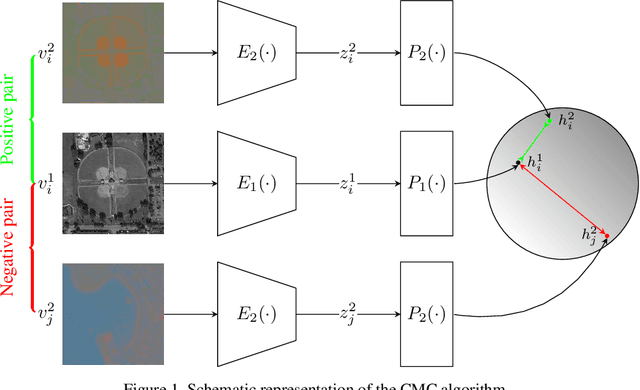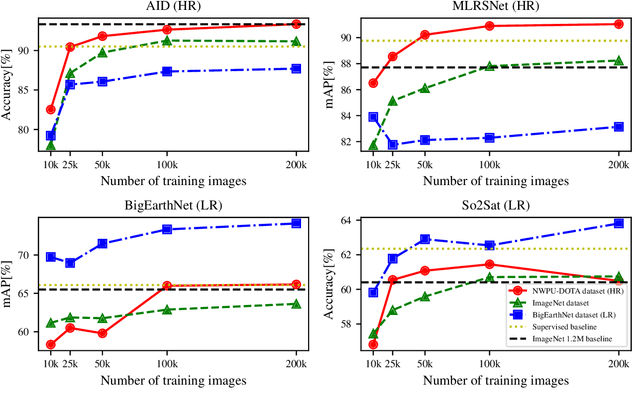Self-Supervised Learning of Remote Sensing Scene Representations Using Contrastive Multiview Coding
Paper and Code
Apr 14, 2021



In recent years self-supervised learning has emerged as a promising candidate for unsupervised representation learning. In the visual domain its applications are mostly studied in the context of images of natural scenes. However, its applicability is especially interesting in specific areas, like remote sensing and medicine, where it is hard to obtain huge amounts of labeled data. In this work, we conduct an extensive analysis of the applicability of self-supervised learning in remote sensing image classification. We analyze the influence of the number and domain of images used for self-supervised pre-training on the performance on downstream tasks. We show that, for the downstream task of remote sensing image classification, using self-supervised pre-training on remote sensing images can give better results than using supervised pre-training on images of natural scenes. Besides, we also show that self-supervised pre-training can be easily extended to multispectral images producing even better results on our downstream tasks.
 Add to Chrome
Add to Chrome Add to Firefox
Add to Firefox Add to Edge
Add to Edge